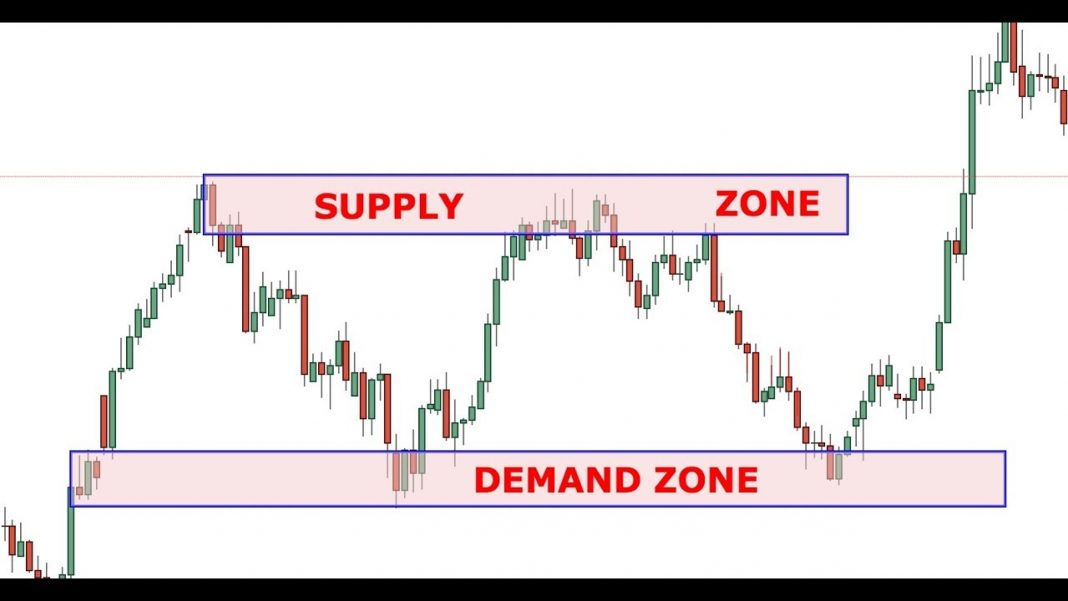Do you use this instrument in your daily market analysis? If not, we strictly advise you to learn more about this instrument. In this guide, we will provide you with all the basic information about it and will show how to determine the zones mentioned correctly step by step.
So, a supply zone is an area on the chart, which is located above the current price line. Consequently, it is where users usually execute sales. When the price enters it, sell orders waiting are performed, as a result, the value goes down again. These fluctuations repeat again and again as long as there are orders available.
By contrast, a demand zone lies below the current price level. There are also traders’ requests waiting for favorable conditions for purchase. When they are fulfilled, the price moves up again, then this scheme repeats.
The next step is to discuss patterns that influence supply and demand zones:
- Reversal. In such a situation, the price trend returns from a rise to a fall or vice versa. It is considered strong. For example, it can follow a drop-base-rally scheme: the rate moves down, then stays downwards to form a base, and, finally, is directed upward. The most essential aspect is the character of these fluctuations. So, if you see that candles representing drops or rises are long, that is a sign of strong imbalance.
- Continuation. These are periods when the price keeps on moving upward or downward without changing the direction. Such trends are usually weak.
So, let us explain to you how to correctly determine supply/demand zones:
Also Read: Key Rules of Forex Money Management for Beginners
- Find market imbalances. These are significant price movements in the corresponding directions, they are depicted with long candles.
- Determine the current rate.
- Find the strongest recent fluctuation on the chart (it will be on the left).
- The supply zone will be presented by upward candles, the demand one ― by downward ones.
- Spot extended range candles. They are long with no (or almost no) wicks.
- Find the base. This is the point where the value gets stabilized in between long shifts.
- For extra confidence, utilize technical indicators to confirm the results of your analysis. Namely, we recommend you apply pivot points, support and resistance levels, or Fibonacci levels.
- Draw the zones to visualize them.
In sum, determining supply/demand zones is a crucial stage of market analysis. Thus, we insist that every trader must know how to identify and interpret them correctly.


